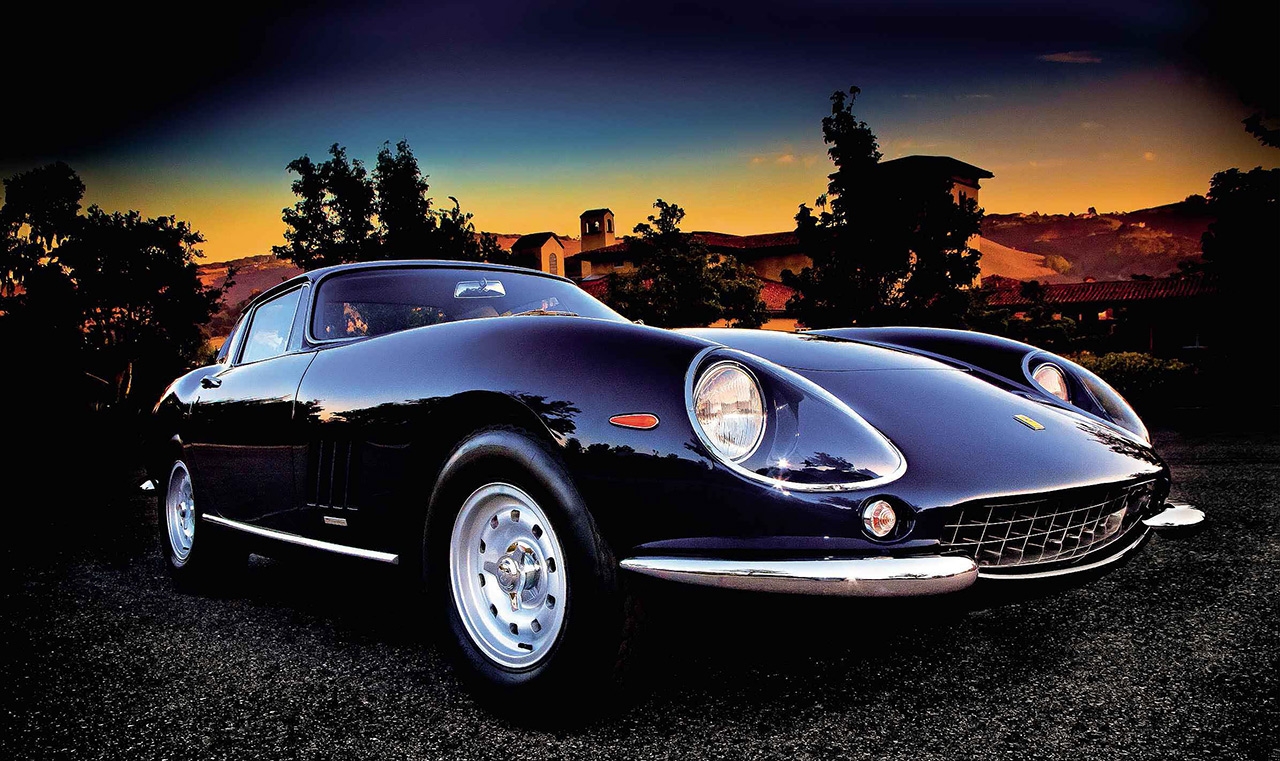
This Ferrari 275 GTB lived a harder life than was apparent at first. Cue one of the most detailed restorations ever undertaken. Words Ken Gross. Photography George Saitas. ‘You’d hold a panel up to the light and you could see right through it’ Putting right everything that Ferrari got wrong.
We don’t need to tell you that Ferrari’s 275 GTB is one of the most desirable sports cars ever built. Values of $3.5 million are spoken of for alloy-bodied long-nose versions, roughly 20 times what the car might have cost new. Californian collector Jeff Lotman bought this one, chassis no 08011, sight unseen – thinking it was a fine example – and wanted to get it ready for concours events such as the Cavallino Classic and Pebble Beach. Turns out it had many more problems than he’d ever imagined. And so begins the story of a painstaking ground-up concours restoration.
According to factory records and detailed information from Ferrari authorities Jim Weed and Marcel Massini, 08011 was built in 1965 as a left-hand-drive, lightweight alloy, six-carb, long-nose Berlinetta – the ultimate two-cam configuration. It was shipped the following year via the Swedish Ferrari concessionaire, Tore Bjurström, to Sture Nottorp, finished in Blu Notte and fitted with all-leather red seats (most GTBs had leather centres and vinyl surrounds) and grey carpeting.
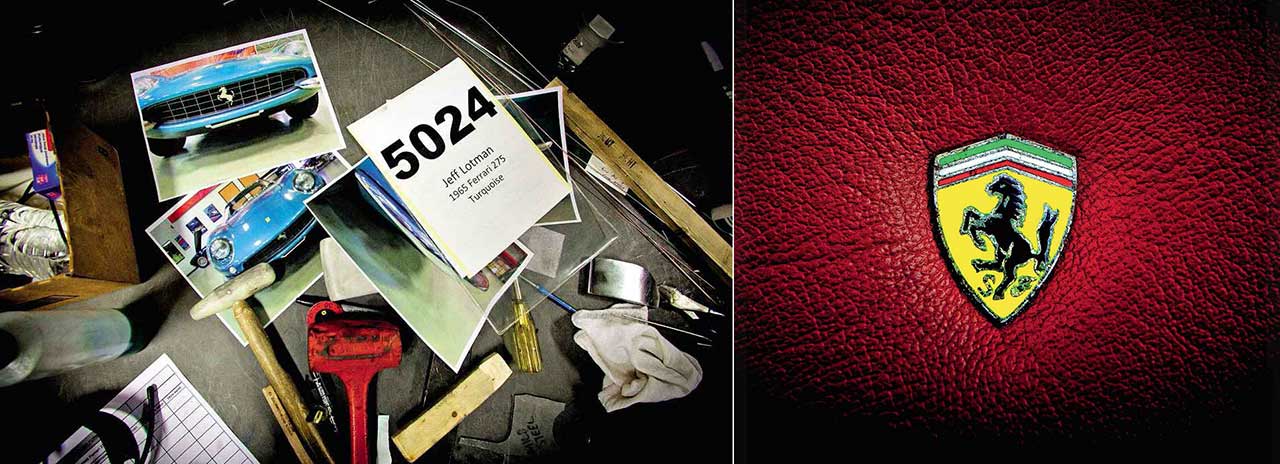
Facing page and above. Stripping the 275 back revealed not only extensive corrosion but also severe structural problems, which the Canepa team had to overcome; the car in the 1970s, apparently with Nottorp’s electrically raised driving light still in the driver’s side of the bonnet.
Nottorp apparently planned to enter the Monte Carlo rally, so the GTB was ordered with uprated cylinder heads, camshafts and valves, and correspondingly adjusted ignition timing, plus GTO-type exhaust manifolds, an Abarth competition exhaust system and 15in GTB/C competition-style outside-laced Borrani wire wheels. These modifications are not reflected in the foglio allestimenti (factory build sheets) but indicated by the late Ferrari expert Gerald Roush in his Ferrari Market Letter publication.
Departing from normal Ferrari practice, Carrozzeria Scaglietti radically modified the GTB’s nose and grille with four large driving lights fitted across the air intake opening, with a custom grille and square foglights in place of the quarter-bumpers. Sture Nottorp suffered from poor night vision and had an aircraft-style driving light installed, mounted through the bonnet, which could be elevated by a windscreen wiper motor when needed.
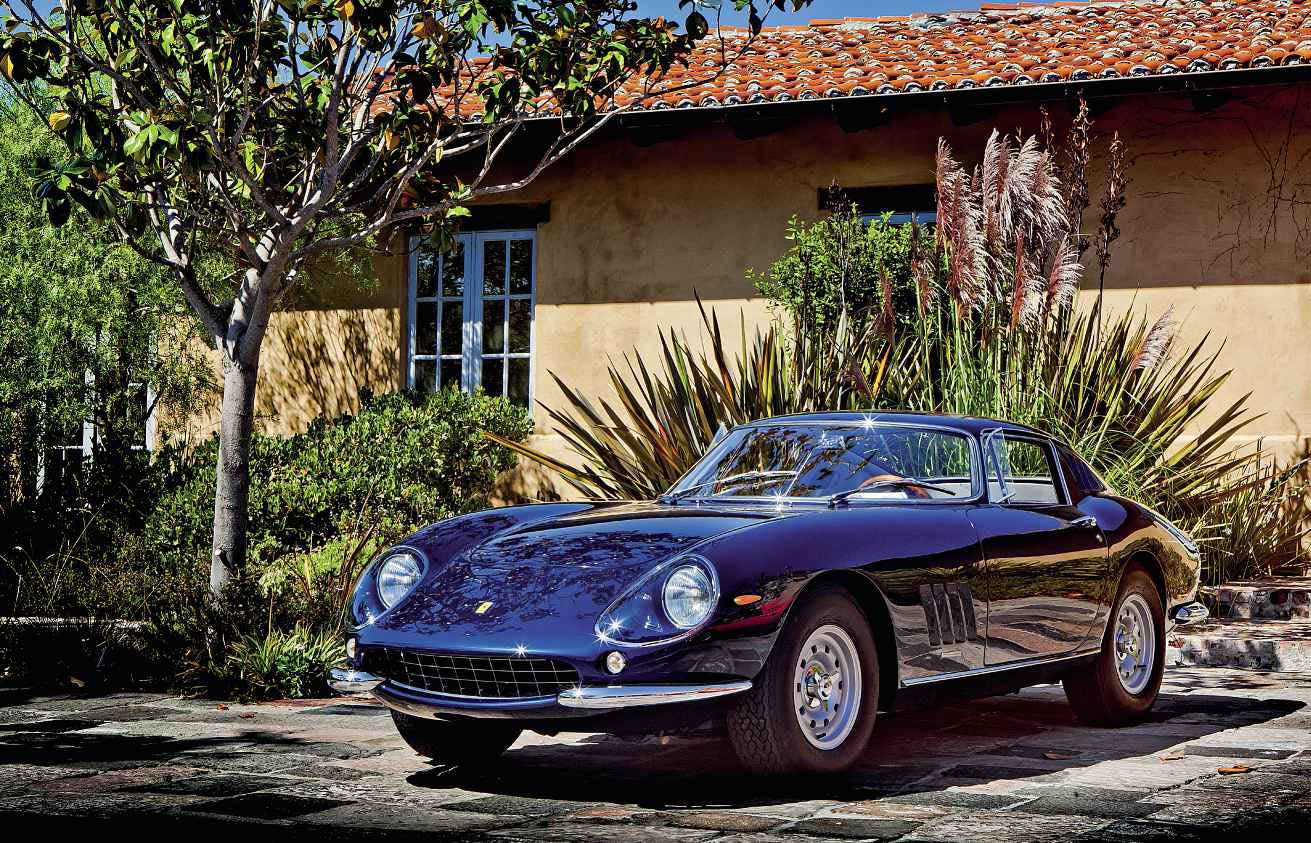
Ferrari 275 GTB restoration
Nottorp’s Monte Carlo Rally hopes came to nothing, but 08011 was displayed at the 1966 Sports Car Show in Göteborg, Sweden, after which the car changed hands (and colour) and suffered an electrical fire behind the dash – possibly related to the wiring for the extra lights. It returned to Italy in 1973 for refurbishment, during which Carrozzeria Scaglietti removed the lighting assembly to fit a conventional long nose and egg-crate Ferrari grille. The non-standard fascia was replaced, new seats installed and the car resprayed in metallic green before returning to owner Per Ingvar Brandström in Sweden.
Massini’s records indicate that the GTB was ‘confiscated in 1994 for unpaid taxes and sold for a fraction of its real value by the Swedish State’. The lucky buyer was Gert-Ove Johansson of Blekinge. Later that year, after spending its life in Sweden, the car was exported by Bert Welander to the USA. The last seller was Nick Soprano of Motor Classic & Competition Corp, in Bedford Hills, New York, in 2014. During this time the car was certified by Ferrari Classiche; its new owner was Jeff Lotman.

Facing page from top. Following 4300 hours of restoration, the 275 GTB looks resplendent in its original Blu Notte; the car had been modified when new, with an extra four driving lights, and square foglights instead of quarter-bumpers.
‘I wanted a rare GTB. Lance Coren, a Ferrari appraiser, had previously inspected this car for another party who ended up not buying it. Marcel Massini provided the factory records. I felt this car was solid and would be a good one to restore. It turned out there were a lot more problems than anyone first thought,’ says Jeff. He turned to Bruce Canepa for the restoration, mindful of limited time. ‘I was buying this car at Pebble Beach, 11 months before I wanted it for the show circuit. Timing was critical. It had to be done by mid-2015.’
Canepa’s 65,000-square-foot workshop in California had never carried out a major Ferrari restoration. Lotman had thought major work wouldn’t be necessary – but close inspection by Canepa’s team suggested otherwise.
‘Jeff had not seen the car,’ says Canepa. ‘He’d sent somebody to look at it who gave his opinion of what was needed on the surface level, but when we got it we honestly thought that it was not an alloy car. We found body filler in the panels that made the car heavier than it should have been. Turns out, it was a patchedup alloy GTB with a left front fender that had been replaced and a badly fitting grille. It was mostly original but in really sad condition. ‘The nose was separated from the opening – really, the whole nose drooped off to the left.
The tubing supports that are attached to the principal frame rails on a Ferrari basically support the body itself, and many of these tubing supports had rusted clear through. Someone had put wood putty in them to hold them together to look like a tube!
‘So I told Jeff that it was going to require a complete restoration. There’d be no shortcuts. It was a start-over. This Ferrari wasn’t something you could show anybody. Not yet, anyway.’
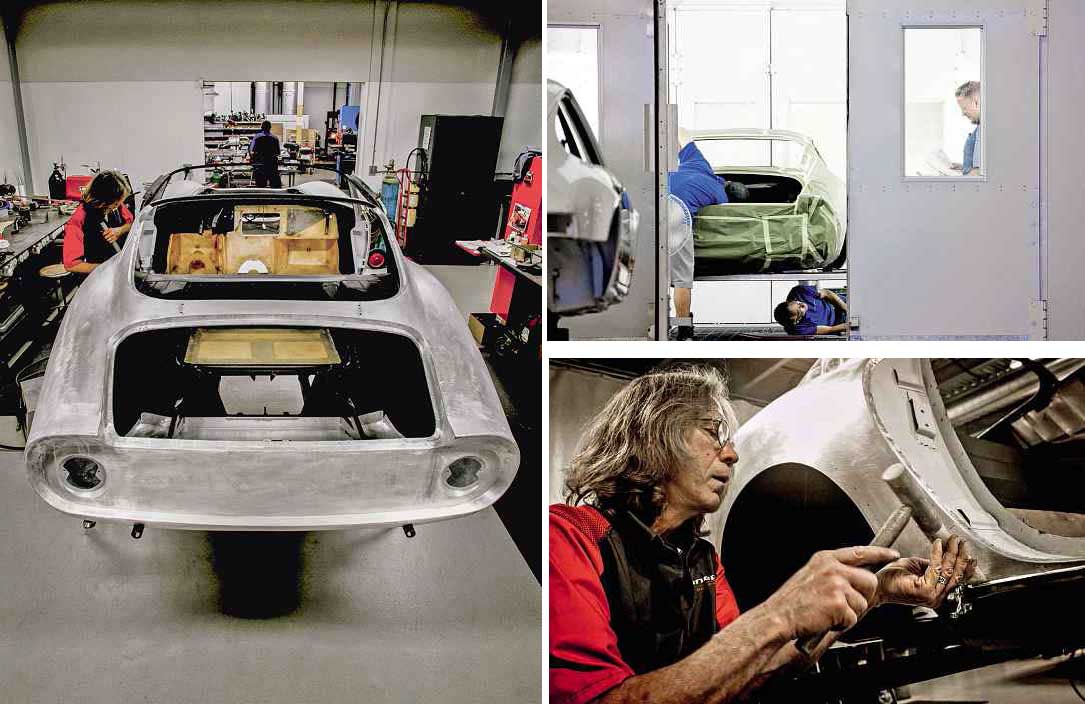
Above and right. Extensive correction work was carried out to ensure that windows, doors, bonnet and boot lid opened and closed without the slightest effort; only then could the final shade of blue be applied.
The issues began with every visible surface. After weeks of careful disassembly, the car was down to a bare frame. ‘The very first thing we did was to remove all the mechanical components from the car so that my mechanical guys could start on that process,’ says Canepa. And dark secrets were revealed.
The glassfibre floor and firewall had all been scorched in the 1960s electrical fire and covered over. ‘As we were taking things apart, we were making sure we had some direction on how they fit, in case we needed to add or subtract any material. Remember, a lot of this stuff never fit well to begin with. We used the old parts as a template: we’d fit the old junk, then remove it and make the new pieces. We made new moulds; nobody had them. And we called everybody.’
The pressure to get the work completed on time was enormous – and there was so much to do. With the body and frame in the detail shop, the job of stripping the old paint began. ‘You can’t bead-blast aluminum bodies,’ says Canepa. ‘We used aircraft solutions to take off all the paint, the primers and then all the filler. We filled two five-gallon plastic drums with Bondo. You save several hundred pounds with an alloy car but this one weighed as much as a steel car!’
The team painstakingly removed all the paint to the point where the panels could be brushed using a Scotch Brite pad, down to the clean, bare aluminium. ‘You could see the seams and the lines where they had replaced a fender. You could see where the nose had been redone, about halfway forward because they had cut the original grille opening completely out. We had early pictures of the car with four huge lights in the grille. All that old work was still visible.

Ferrari 275 GTB restoration
Making things worse, the A-pillars were corroded through. You could see through the doorskins on both sides. Wherever there was metal touching metal, there were holes from corrosion. You’d put a panel up to the light and you could see right through it, like metal lace,’ says Canepa.
All four wings were rotten to the point where simply making new panels would have been the easiest option. Only: ‘We’d made the decision to save everything that was salvageable, every square inch. So we made body bucks. Once we made the bucks, we put the body, the nose, and the rear of the car on the bucks, and figured out just how crooked it all was. Then we started removing pieces like a jigsaw puzzle – but only the areas that were corroded. Two of the guys worked on that aluminum body flat out.’ Those doorskins, sadly, were not salvageable. ‘You could cover them up with Bondo and nobody would know,’ says Canepa. ‘Or, you could ignore them and nobody would know, because you wouldn’t see them. But that wouldn’t be right.’
So the team made up a fixture for each doorframe, marked all the locations, cut out the bottom six inches of each door and made new bottom sections. ‘New tooling was made; we spliced the bottoms of the doors back in fresh steel so we could put the skins back on. And then we made new doorskins at the same time…’ says Canepa. ‘We pulled the frame off the decklid and the frame off the hood so everything we worked with was basically bare tin. We removed the left front fender, reshaped it and refitted it. We made a new nose for the car. Eventually, we got the body back to where it looked like a new alloy 275.’
The restoration took 4300 hours, including the mechanicals, the complete interior, even the wheelhubs, the brake calipers… ‘We did everything here,’ says Canepa. ‘It’s not a torquetube car, so the engine and transaxle had to be carefully shimmed for proper alignment.’
While some parts were not necessarily correct, not too many were actually missing. There were those Borrani wire wheels instead of Campagnolo alloys, it had the wrong wheel knock-offs, the wrong dash: after the fire, that had been remade from oak instead of teak, then covered with vinyl like a 275 GTB/4’s. ‘We made an all-new teak dash in-house,’ says Canepa. ‘Finding parts for a 275 GTB was a huge task. Ferrari stuff’s hard to find.’
The original Blu Notte paint – a bluegreen metallic shade – had to be sourced, as did the correct red leather. The latter, along with carpet and headliner material, came from HVL in Europe. Meanwhile, expert assistance was provided by Ferrari Club of America pastpresident Dyke Ridgley.
‘He helped us through the whole process,’ says Canepa. ‘We sent him pictures of everything. He taught us how things are supposed to be done, and gave us indications on where to find things. He corrected things that other people said were done a certain way. He’d say “No”. And, he could prove it. He was the most valuable resource we had. Without Dyke helping to advise us on all the details, it would be just another restored car. He’s different from most experts. He’s a very humble guy with a wealth of knowledge.’
What about all that filler? ‘Alloy Ferraris all had a polyester filler on the surface. Every one we ever stripped has had that,’ says Bruce. ‘So there was no way to take a Ferrari and prime the bare metal, block it, and paint it. It’s not like one of those Cobra bodies from Poland where you could simply polish it and it looks awesome. In the end, with any early Ferrari restoration, you always end up with a skim coat of body filler. Of course, you use contemporary filler. The idea is, the skim coat is an eighth-of-an-inch thick. In the case of Jeff’s car, it was 5/8 in thick, in lots of places. I am not kidding.’
Many other detail problems were overcome during the rebuild. ‘One of the things I noticed before we ever started was that the window frame didn’t fit the shape of the opening. When you’d go to roll the window up, the frame had a funny twist in it. Nobody did that to it. That’s how it was built,’ says Canepa. ‘So window handles get broken off. Switches get broken off. Everything gets broken because you’re forcing everything. Doors are slammed and you’re seeing handprints in them. You look in the door jambs and you see all the scuffmarks from the door not fitting right. So, I said, we’re going to re-engineer everything that nobody sees to get it to work right.
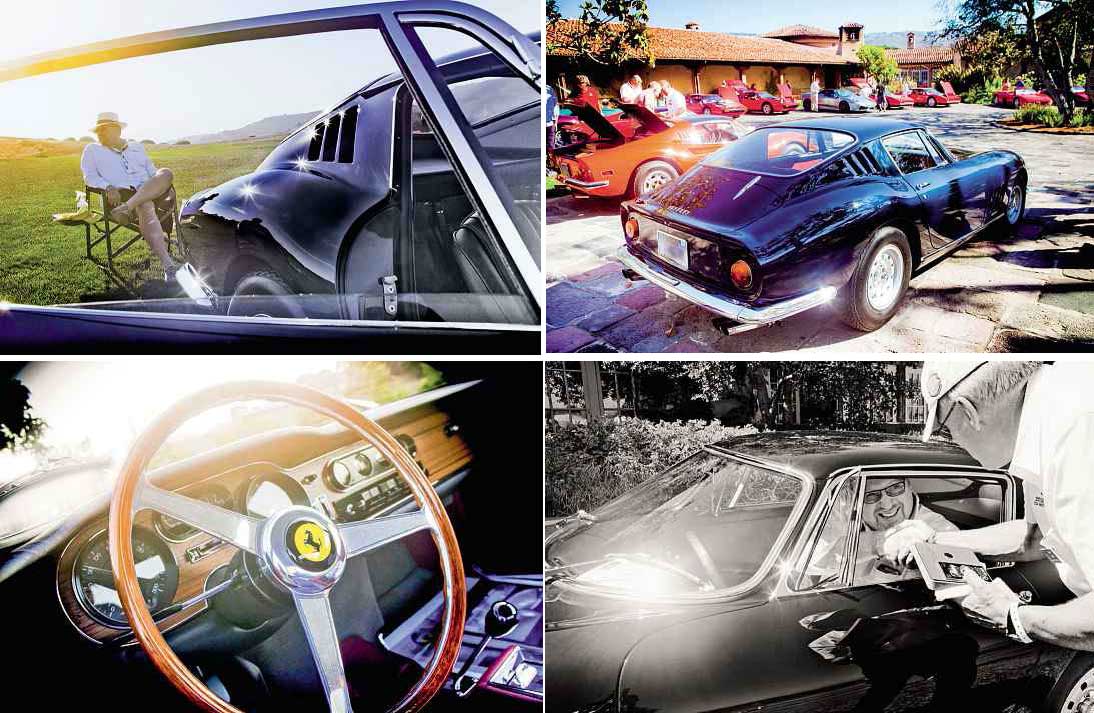
Ferrari 275 GTB restoration
‘Take the doorframe. We cut out the doorframe where the back of the door vent goes up, and we cut it apart. Then we took the outside perimeter frame and shaped it to fit not only the opening of the door but the window too. So when the window went up and down, it fit in the guide correctly. It was not dragging in the guide. That was 50 hours minimum, maybe 100 hours’ worth of work on just those two door frames. And the other thing we did was to modify all those pulleys that the cables were on. When they’re off, they’re crooked, so the cables end up in a bind. We lined all of those up. We lined up the cables. We made everything work properly. You can roll a window up and down in this car with one finger.’
That philosophy continued throughout the car. ‘Now everything works like that. The trunk closes with no effort. The hood closes with no effort. With the two doors, there is no adjustment. So I said, “OK, put the door seals in, add weight to the car as if it had the motor and the gearbox installed. That way you’ve accounted for the flex, which we do with every car. Put sandbags or whatever in there. Weigh it to what it was and put the new weather seal in the door frame. Put the door frame in the door for the window. And then put the hardware in it. Now fit the door. Don’t just restore the door and hope it fits.’
The finished article speaks for itself. As owner Jeff Lotman says: ‘The results are spectacular. The car is flawless. We received 98 points at the Cavallino Classic and a Platinum award. We also won the Ferrari Club of America Coppa Bella Macchina. I was pretty happy.’
And it’s testament to the quality of the work carried out that it has received such notice and acclaim. As Bruce Canepa says: ‘One guy asked us to do a serious Ferrari and all of a sudden it set the wheels in motion. I’m already getting calls, which is great. It was nice at the Ferrari Nationals when one of the judges made a comment. He said: “We didn’t know Bruce Canepa restored Ferraris.”’
Seems he does now.
BUY THE BOOK! ‘Ferrari 275 GTB #08011’ by Ken Gross, with photography by George Saitas, is published by Assouline Publishing and will be reviewed in next month’s Octane. See www.assouline.com for more details.
‘The finished article speaks for itself. As owner Jeff Lotman says: “The results are spectacular”’
TECHNICAL DATA 1965 Ferrari 275 GTB
Engine 3286cc V12, single OHC per bank, six Weber 40DCN/3 carburettors
Power 286bhp @ 7500rpm
Torque 217lb ft @ 5000rpm
Transmission Five-speed manual, rear-wheel drive
Steering Worm and roller
Suspension Front and rear: double wishbones, coil springs, telescopic dampers, anti-roll bar
Brakes Discs
Weight 1100kg
Performance Top speed 160mph / 0-60mph 5.9sec
‘The restoration took 4300 hours. “We did everything here,” says Bruce Canepa’
‘It was mostly original but in really sad condition. The whole nose drooped off to the left’
‘Lotman had thought major work wouldn’t be necessary – but close inspection suggested otherwise’





